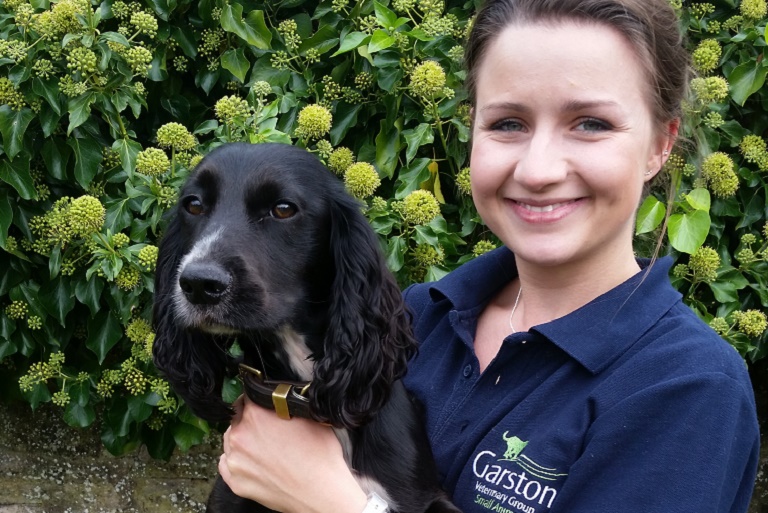Standing up for the veterinary profession
08 Aug 2024
25 Apr 2022 | Alice Moore
With the recent increase in the cost of gas and electricity, there is now even more reason to review your practice’s energy consumption. Improving the efficiency of your building will not only reduce its impact on the environment but it will also save the business a significant amount of money. BVA policy committee member Alice Moore shares tips from her practice to help you save energy and reduce your practice heating bills.

Whilst some of us may work in the luxury of a modern, purpose-built building, a huge number of practices in the UK are situated in older buildings such as converted houses, which are inherently less efficient. Nevertheless, there are still simple changes that we can all make to our workplaces, no matter how ancient or impractical they may be, which will reduce our energy consumption meaningfully. With this in mind, I would like to share with you some tips on how to make your practice heating systems more efficient.
First of all – reduce the requirement for active heating by improving the building’s insulation. Because heat rises, the most common course of heat loss in any building is via the roof. It is therefore vital to check that loft insulation is adequate.
Making sure doors are well fitted and drafts excluded can also make a surprising amount of difference. If you are able to, consider upgrading old windows to double or even triple glazing.
Once you are satisfied that the building is as well insulated as it can be, take some time to review your current heating system and how it is used. Whatever system you have, ensuring that it is being used as efficiently as possible is essential.
For practices heated with a traditional gas or oil system, simply turning radiators off or down in areas where they are not needed is a good place to start. Most radiators are fitted with a thermostatic radiator valve, which allows the amount of heat that the radiator emits to be adjusted manually. Consider upgrading to a ‘Smart Heating’ system, which will enable the central heating or radiator thermostats to be controlled remotely e.g. through a mobile phone app. Even more advanced systems, such as ‘Weather Compensated Circuits’, are able to maintain a constant temperature in a room by sensing the outside air temperature and adjusting the flow of hot water in the radiators until the desired ambient room temperature is achieved.
Other practices will be using air source heat pump systems, more commonly referred to as ‘air conditioning’, which are generally far more efficient, low carbon systems if used correctly. Some have the benefit of allowing cooling as well as heating, which is particularly useful in small animal practices where an open window may inadvertently result in the loss of a patient!
Regardless of which system you are using, it is important to consider what temperatures you are trying to achieve. Industry standards suggest the following targets:
Treat your heat pumps as you would your anaesthetic monitors. The information they provide is invaluable, but if that information is not tallying up with what you are experiencing yourself, then the output is worth double checking. It is easy enough to use a basic thermometer, such as one you might use in a pharmacy, to check the air temperatures are matching up to the machine controls or monitors. There may be obvious reasons for discrepancies e.g. doors opening frequently into reception on a cold day, but if not, consider having the units serviced. Regular servicing of ALL heating and cooling systems is essential to maximise efficiency.
Unless patient need dictates, such as in small animal operating theatres, try to avoid striving for temperatures outside of these recommended ranges. It can be tempting to either increase or decrease the target temperature more drastically in order to achieve cooling or heating quickly, but it is far more efficient to increase fan speed instead. In order for air source heat pump systems to function well, it is essential that there is a ‘thermal gap’ i.e. a difference between heating and cooling temperature targets. Make sure the unit is operating under the correct mode – this is usually denoted by a snowflake symbol for cooling and a sun symbol for heating.
Excessive cooling in particular uses a huge amount of energy. In addition, heat pumps and air conditioning units use chemicals known as ‘refrigerants’ to achieve their cooling effects. Refrigerants are heavily regulated due to their toxic and flammable properties, as well as their significant contribution to ozone depletion. CFC and HCFC refrigerants are particularly potent greenhouse gases – any leakage into the atmosphere has disastrous consequences for the environment. However, some units can be upgraded so that they use newer, less harmful refrigerants. It’s worth looking into which chemicals your system currently uses, and whether or not they can be replaced with better ones.
Once you’ve got the basics ticked off your list, consider enlisting the help of a professional consultant to carry out an ‘energy audit’ on the building. This process will evaluate energy consumption in more detail and identify further opportunities to save costs. Many energy companies and other online resources are now providing a whole host of energy cutting hacks that can easily be adapted to help you do your bit to minimise your practice’s carbon footprint.
Make sure you watch the Greener Veterinary Practice Webinar on using energy and water efficiently for more advice and guidance.
Get tailored news in your inbox and online, plus access to our journals, resources and support services, join the BVA.
Join Us Today